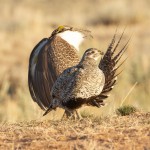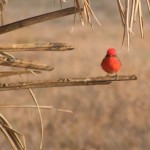A brief mid-summer update- it has been a busy few weeks after getting back from my Wyoming/Colorado trip at the beginning of July. Aside from the usual manuscript reviews and progress on our own manuscripts, a couple of noteworthy things to check off:
Gail, Anna, and I submitted our latest NSF grant that would fund another 3 years of work on the sage-grouse. We brought on another collaborator: Jennifer Forbey is a professor at Boise State University in Idaho, and is an expert in herbivore/plant dynamics, particularly the importance of nutritional content and plant-produced toxins. With Jennifer on board, we will have a much stronger foraging component to our examination of off-lek behaviors of the grouse (in other words, what they are doing the other 20 hours of the day when they are not courting and fighting on the lek ). I feel like I usually do after writing one of these: exhausted but excited.
I also just finished making a poster for the North American Ornithological Congress meeting next week in Vancouver. I’ll be presenting some new analyses on the lateralization in behavior. Last year I presented on a similar topic at the Animal Behavior meetings, but I didn’t have much time to put together something (I was originally going to present our mechanical sound (i.e. “swish” project), but Becca was able to present this work herself, so I switched to the lateral bias analysis at the moment. This year it was still a rush, but I think we ended up with analyses that better link the existing literature on lateral biases to our own data, and hopefully have results that are pretty close to what will end up in the eventual publications.
The second Summer Session started this week in Davis, so I’m meeting with a few new prospective undergraduate researchers. We’ve made a lot of progress so far this summer- we’ve almost finished measuring mating success from our 2012 Chugwater Lek tapes and have started the Monument Lek mating success tapes. Marty, our summer program intern, has even gotten into the 2012 robot experiment tapes. It’s never good practice to get too excited over preliminary results from partially-collected data, but it does look really encouraging so far (his data look at whether males treated the “coy/disinterested” and “interested” behaviors of the fembot differently). We are also almost done with a sample of display behavior measures from the 2011 season- this will add to our understanding of males who were tested in the “environmental responsiveness” playback experiment in 2011.



